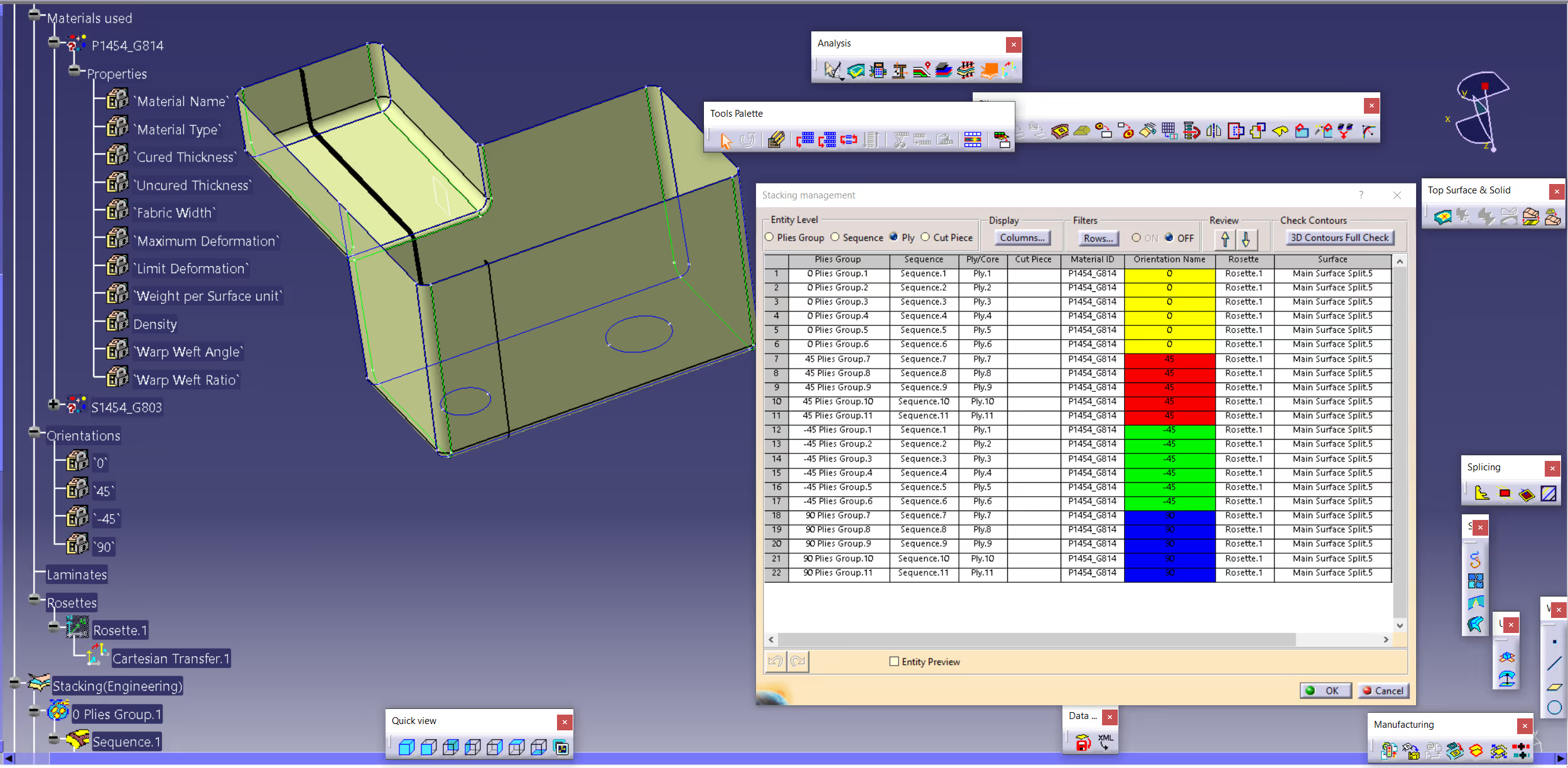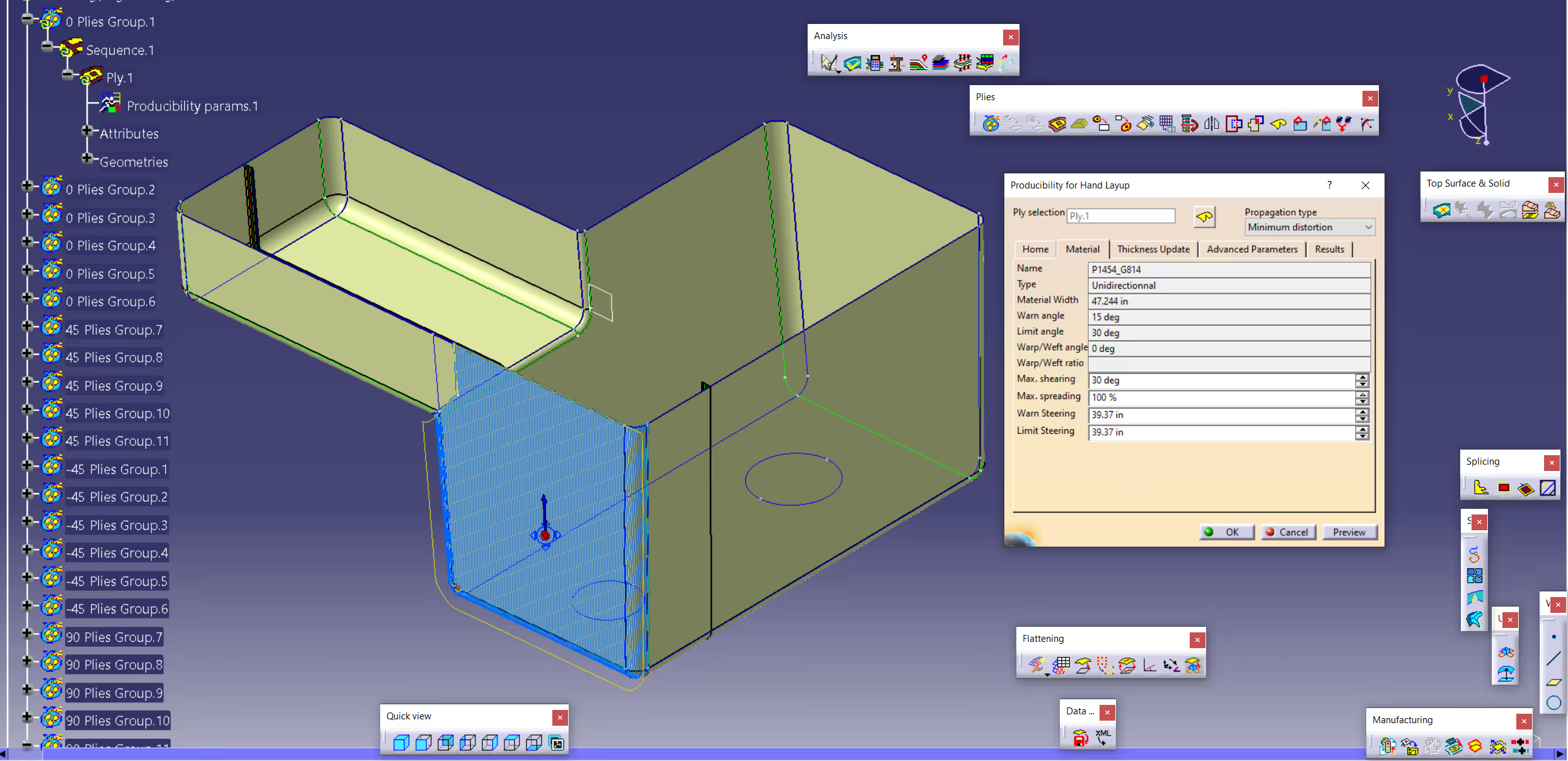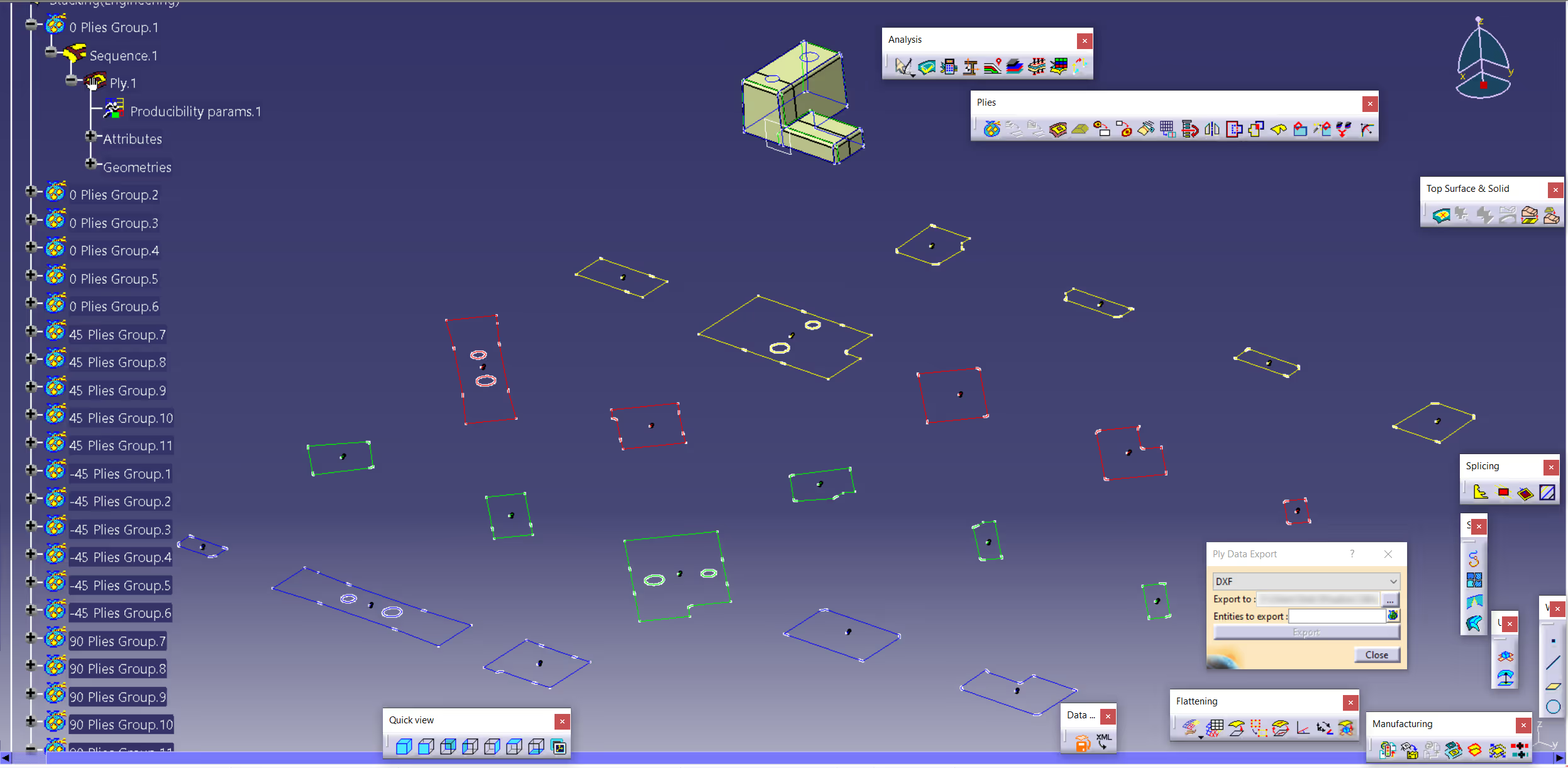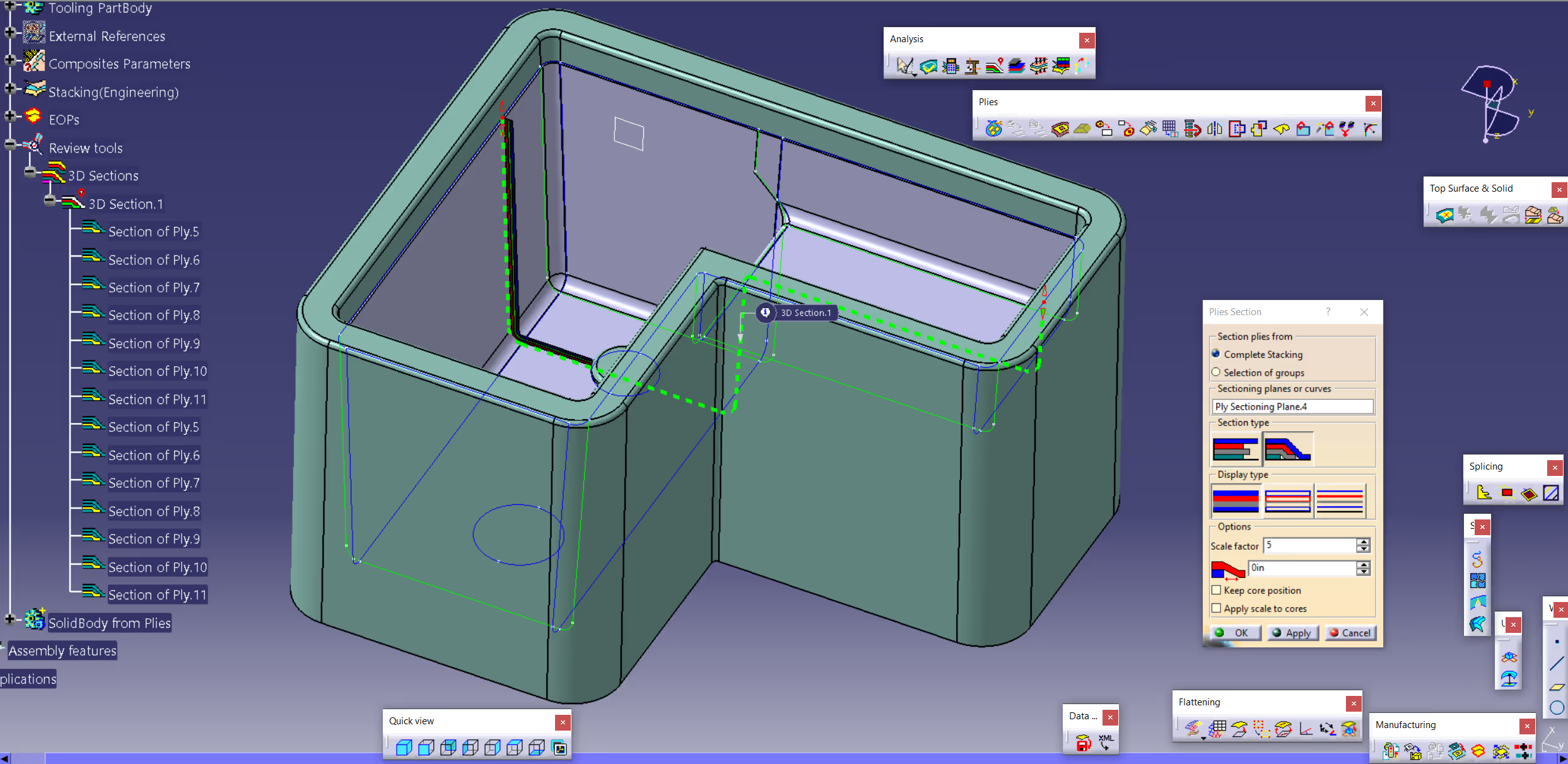Case Studies

One of the biggest helicopter companies out there contacted us. They needed help designing their parts using CATIA, a powerful computer program used for 3D design — especially for composite materials. In such parts layers of special materials stuck together to make product designs stronger and lighter. Well, we took the job and excited them with the results!
CATIA has a tool called the Composites Design Workbench, which increases cost effectiveness of composite fiber CAD design. It's a user friendly set of 3D modeling tools, which lets engineers build 3D models that include every detail about the materials — like strength, weight, and how they’re layered. These high quality models help create real parts in the factory, from the ground up.
Now, we’ve got a team of engineers here in CAD/CAM Services who know CATIA CAD software like the back of their hand. But even for us, this job was no walk in the park.

The biggest challenge? The customer gave us old-school Mylar blueprints — basically, plastic sheets with hand-drawn engineering plans. Over time, those drawings can stretch, shrink, or just fade away.
They also sent us some older computer files, but we couldn’t just trust 'em right away. First thing we had to do was compare the digital models to the old blueprints to see if they matched up.
And guess what? Out of all the companies they contacted, we were the only ones who noticed something was off. The old drawings and the new models didn’t line up. We brought it to their attention, and they decided to go with the Mylar blueprints as the most trustworthy source.
Next up, we had to calibrate the scanned images of those Mylar sheets. That’s a fancy way of saying we had to adjust the images so everything was back to its original size and shape. Mylar can warp over time — like how a good ol’ cowboy hat can lose its shape if you leave it out in the sun too long. It takes a skilled engineer to fix that.

After all that, we finally got to the fun part: designing the composite layers in CATIA. This part takes serious know-how.
You’ve gotta pick the right materials and stack them just right. No gaps, no overlaps — just a perfect fit. You can't do that kind of work by guessing. It takes experience, and we’ve got it in spades.
In the end, we handed the client some of the most accurate CAD models they’d ever seen. We gave them a full set of plies and assemblies, all perfectly organized in CATIA’s Composites Workbench. The flat patterns were ready to go straight into production.

Long story short: when it comes to tough engineering jobs, especially ones involving tricky old files and high-end tools like CATIA, we’re the folks to call. We’ve got the brains, the tools, and the experience to get it done right.
Need help with your own CATIA composites or other CAD related project? Give us a shout, and we’ll saddle up to help you out!
